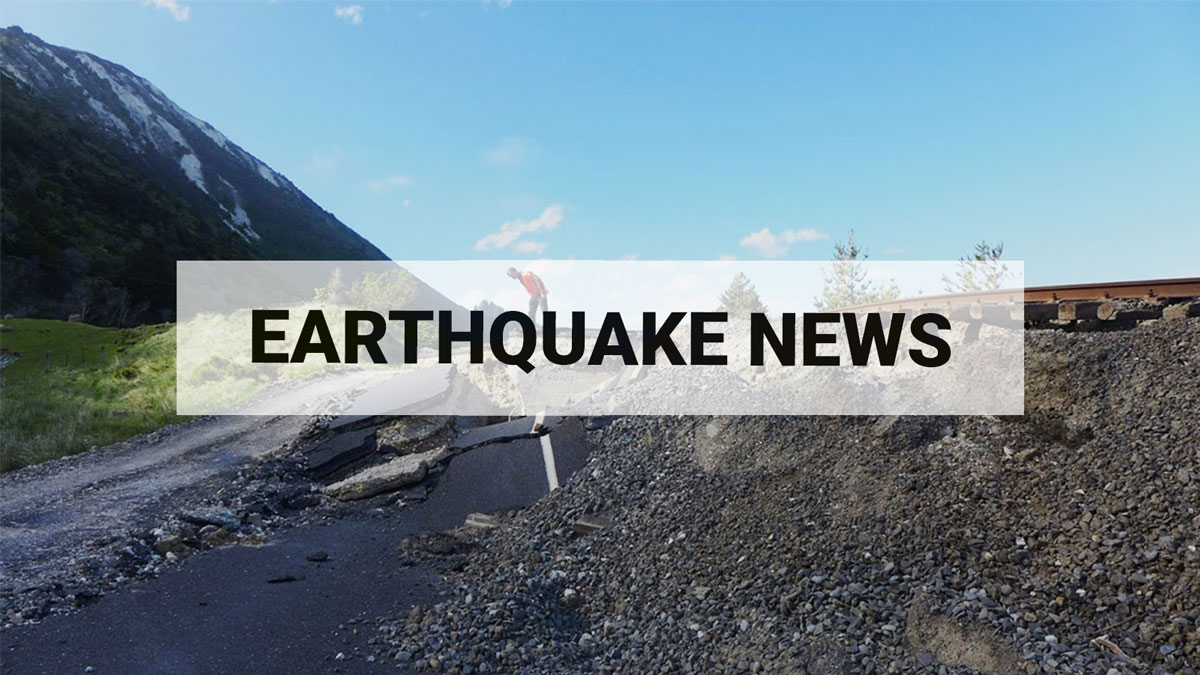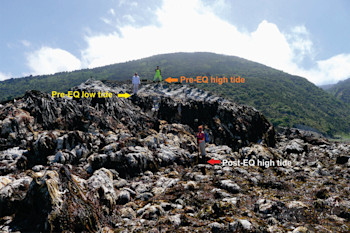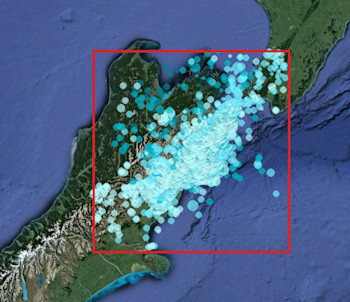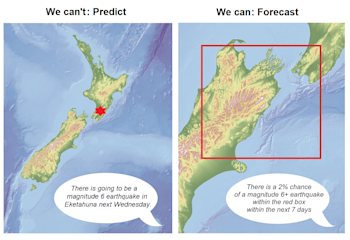
2016 Kaikōura Earthquake and Earthquake Forecasting
At 12.02 a.m., on Monday 14 November 2016 NZDT, a magnitude 7.8 earthquake struck 15 km north-east of Culverden, North Canterbury, starting near the town of Waiau. It was New Zealand’s most complex earthquake ever recorded, with more than 20 faults rupturing.
The earthquake rupture (movement on the faults) spread north-east through the North Canterbury and Marlborough Fault areas- essentially "unzipping" along approximately 180 kilometres of the northeast coast of the South Island. The rupture lasted nearly two minutes in total, and where the faults met the ground surface the ground was displaced, horizontally (sideways) and vertically (up-down) by up to 12 metres.
The earthquake also caused a tsunami that was pretty rare, as it was generated from an earthquake that started on land and crossed the coastline offshore. It was also unusual because multiple offshore faults moved. This unique combination meant that the tsunami behaved a little differently from the more standard tsunamis generated from only one fault. Click here to read more about the tsunami.
Watch: Papatea Fault Revisited
Aftershocks
In the weeks following the M7.8 Kaikōura earthquake there were more than 11,000 earthquakes recorded within the aftershock forecast area (red box below), most of them were too small to be felt.
These aftershocks mostly occurred throughout a broad area that surrounds the faults that ruptured in that earthquake, from North Canterbury through to Cook Strait, that surrounds the faults that ruptured in that earthquake, although a few have occurred in the lower North Island. The table below shows how these earthquakes have decreased over time:
| Year | Earthquakes (Located within the aftershock forecast area) |
| 2016 (up to 13/11/2016) | 2695 |
| 2016 (14/11/2016 to 31/12/2016) | 11083 |
| 2017 | 10115 |
| 2018 | 4305 |
| 2019 | 4301 |
| 2020 | 3121 |
| 2021 | 2874 |
| 2022 (up to 13/11/2022) | 2450 |
Following the M7.8 Kaikōura earthquake, GNS started to produce earthquake forecasts for an area surrounding Kaikōura, we now take a closer look into what these actually mean.
What are earthquake forecasts?
While no one can yet scientifically predict earthquakes, we can provide forecasts of future aftershocks (based on probabilities). Forecasts tell us what is most likely to happen, through to what is very unlikely, but still possible. Most earthquake aftershock sequences decay (i.e. the number of earthquakes generally decreases) over time, with spikes of activity that can include larger earthquakes.
What is the difference between earthquake forecasts and earthquake predictions?
An earthquake forecast provides a probability or chance. It says how likely it is that an earthquake of a given magnitude range within a given area, over a given period, could happen.
An earthquake prediction would be much more specific. It would say that an earthquake of a certain magnitude in a certain area, at a certain time, will happen.
At present no scientific method exists that would allow experts to accurately and reliably predict when and where an earthquake is going to happen.
We don't know exactly what is coming when, however, knowing what is likely to happen can help individuals and communities make good decisions.
Kaikōura Forecasts
We continue to update the forecasts for Kaikōura, and you can view them here. For example, our forecasts tell us there is a 31% chance of one or more M6.0-M6.9 earthquakes happening in this region within the next year. And we estimate there will be between zero and two earthquakes in this magnitude range, in this location, within the next year.
Keep an eye out on Friday for our next story, Earthquakes Forecasts – Why do we make them?
Although we can’t prevent natural hazards, we can prepare for them – and we should.
Earthquakes can occur anywhere in New Zealand at any time. In the event of a large earthquake: Drop, Cover and Hold. If you are near the coast and you feel a Long OR Strong earthquake, get to higher ground or as far inland as possible once the shaking has stopped in case a tsunami was generated.
Want to get prepared?
NEMA has a great website with information on what to do before, during and after an earthquake.
Prepare your home. Protect your whānau.
There’s a lot we can do to make our homes safer and stronger for earthquakes. Toka Tū Ake EQC’s website has key steps to get you started.
Media enquiries: media@gns.cri.nz or 021 574 541





